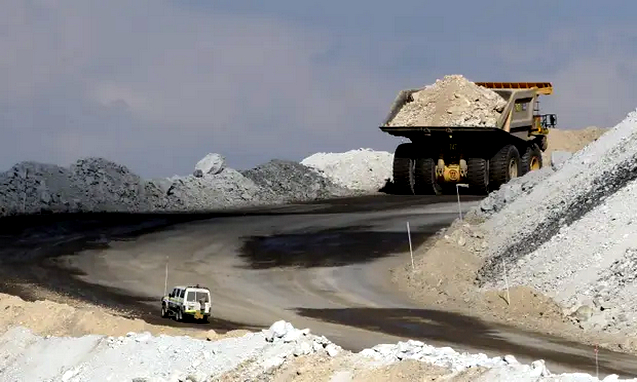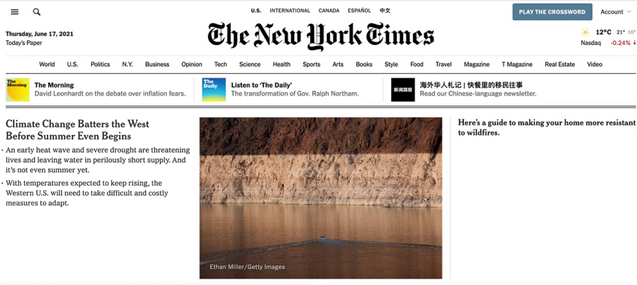Environment minister has 28 days to appeal historic ruling that carbon emissions from coalmine should not cause young people ‘personal injury or death’
Climate campaigners said there should be “no moral, legal or rational way” environment minister Sussan Ley could now approve the project.
Bromberg declared that when the minister makes her decision over the coalmine, she has a duty “to take reasonable care” to “avoid causing personal injury or death” to Australian residents under 18 “arising from emissions of carbon dioxide into the Earth’s atmosphere”.
“We are delighted that the law of the land now states that the government has a duty to avoid causing harm to young people,” said Anj Sharma, a 16-year-old Melbourne student and one of the eight children supported in court by Sister Brigid Arthur.

|
|
Australian court finds government has duty to protect young
people from climate crisis.
Read more
|
In his May judgment, Bromberg said the potential harm to children from climate change “may fairly be described as catastrophic, particularly should global average surface temperatures rise to and exceed 3C beyond the pre-industrial level”.
Lawyer David Barnden, who represented the children, said: “For young people this decision brings hope and anticipation of a better, and responsible decision making by government. The ramifications for the minister are clear.”
The judge’s declaration was made in relation to the Vickery Extension project, which gained approval from the NSW Independent Planning Commission in August last year. Ley has still to approve the project.
Whitehaven has said about 60% of the coal from the extension will be used for making steel, with the rest for burning in power stations.
Barnden said it was conceivable the duty of care would extend to other fossil fuel projects that came before the minister for approval. He said the minister would have 28 days to appeal against the case.
A spokesperson for the minister said: “The Morrison government will review the judgment closely and assess all available options.”
A spokesperson for Whitehaven Coal said it had nothing to add to its previous statement made after the May court decision, “since today’s orders really just formalise that outcome”.
That statement said the company “looks forward” to being given approval under the Environment Protection and Biodiversity Conservation Act.
Whitehaven argued the project would dig up “high quality coal” that would contribute to “global CO2 emissions reduction efforts”.
Georgina Woods, of the climate campaign group Lock the Gate Alliance NSW, said: “There is no moral, legal or rational way now that Sussan Ley can approve this project. To do so would add momentum to catastrophic climate change which will harm every Australian child living today.
|
We are passionate climate warriors. Our legal battle is not over but my heart is a bit lighter. - Ava Princi 
|
|
Ava Princi (left), Liv Heaton, Izzy Raj-Seppings and Laura Kirwin
outside Australia’s federal court on Thursday. The court found the
government has a duty to protect young people from the climate
crisis. Photograph: James Gourley/AAP |
“Now the ball is back in the minister’s court,” he said. “My expectation is the minister and the department will come up with a sneaky way to skirt around this until either there’s a successful appeal or they can change the law.”
He said as long as the declaration remained in force, the minister would have to find a way to acknowledge it before she made a decision on the Vickery plan.
He said the minister could decide to refer to the duty of care in any conditions put on an approval, such as the purchase of environmental assets.
He added: “This is also relevant for other big coal and gas projects – anything with fossil fuels – the minister and the department are now conscious of potential challenges to their decisions so they’d be foolish not to take this into account for future decisions.”
Links
- (AU RenewEconomy) Australia’s Government Feels No Duty Of Care Towards Young People On Climate
- (AU The Australian) Environment Minister Sussan Ley Frosty On Climate Change Ruling
- (AU Legal) Minister Found To Owe Duty Of Care To Consider Climate Change In Decision Making
- (AU The Conversation) Climate Change Will Cost A Young Australian Up To $245,000 Over Their Lifetime, Court Case Reveals
- (AU The Guardian) Australian Court Finds Government Has Duty To Protect Young People From Climate Crisis
- (AU) Passionate Young Voices Demand To Be Heard On Climate Crisis
- (AU) 'A Duty Of Care': Australian Teenagers Take Their Climate Crisis Plea To Court
- (AU) Top Judge Urges Lawyers To Take Stand On Climate Change
- (AU) Companies, Directors, Governments Face Wave Of Climate Change Lawfare





